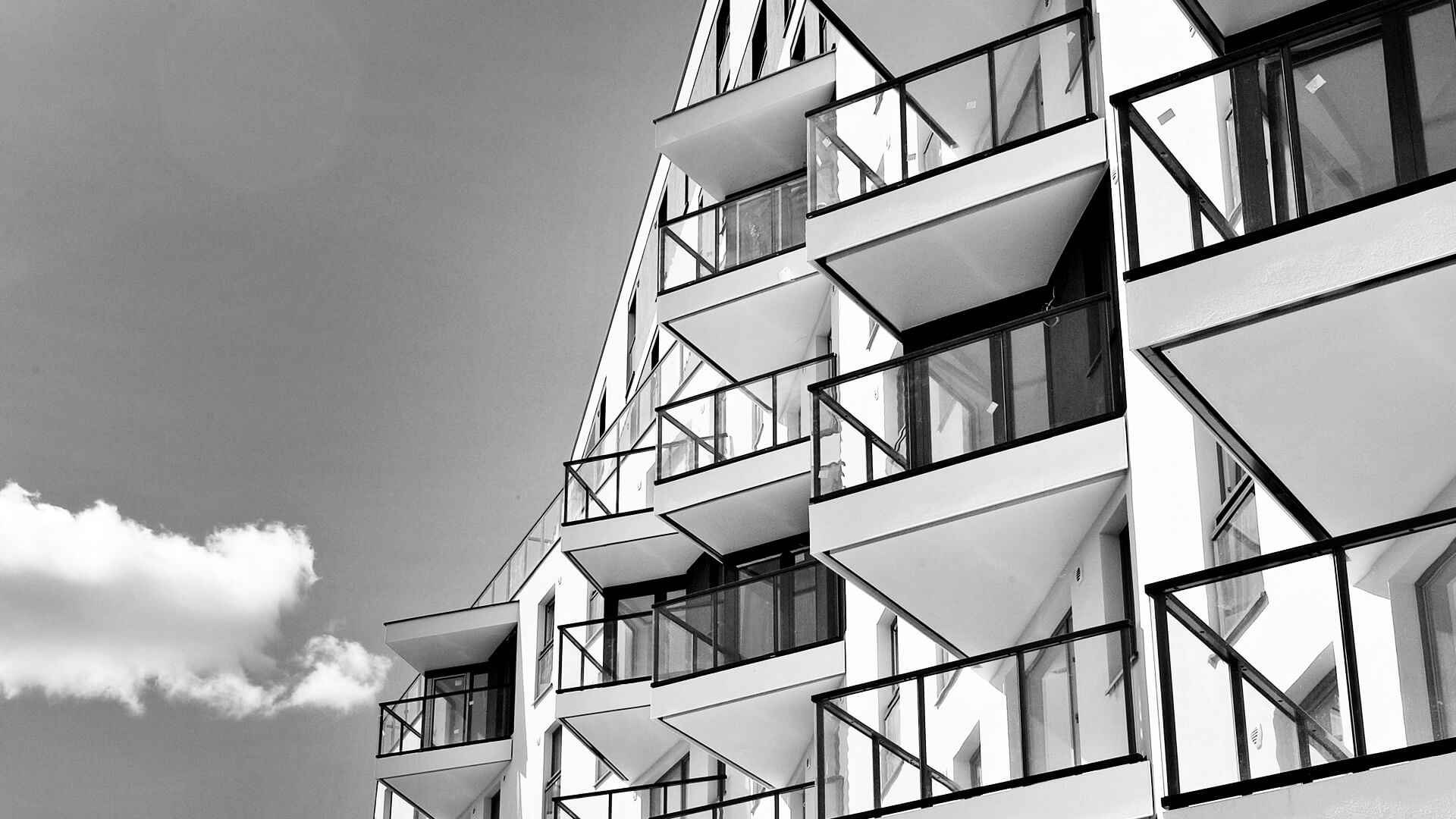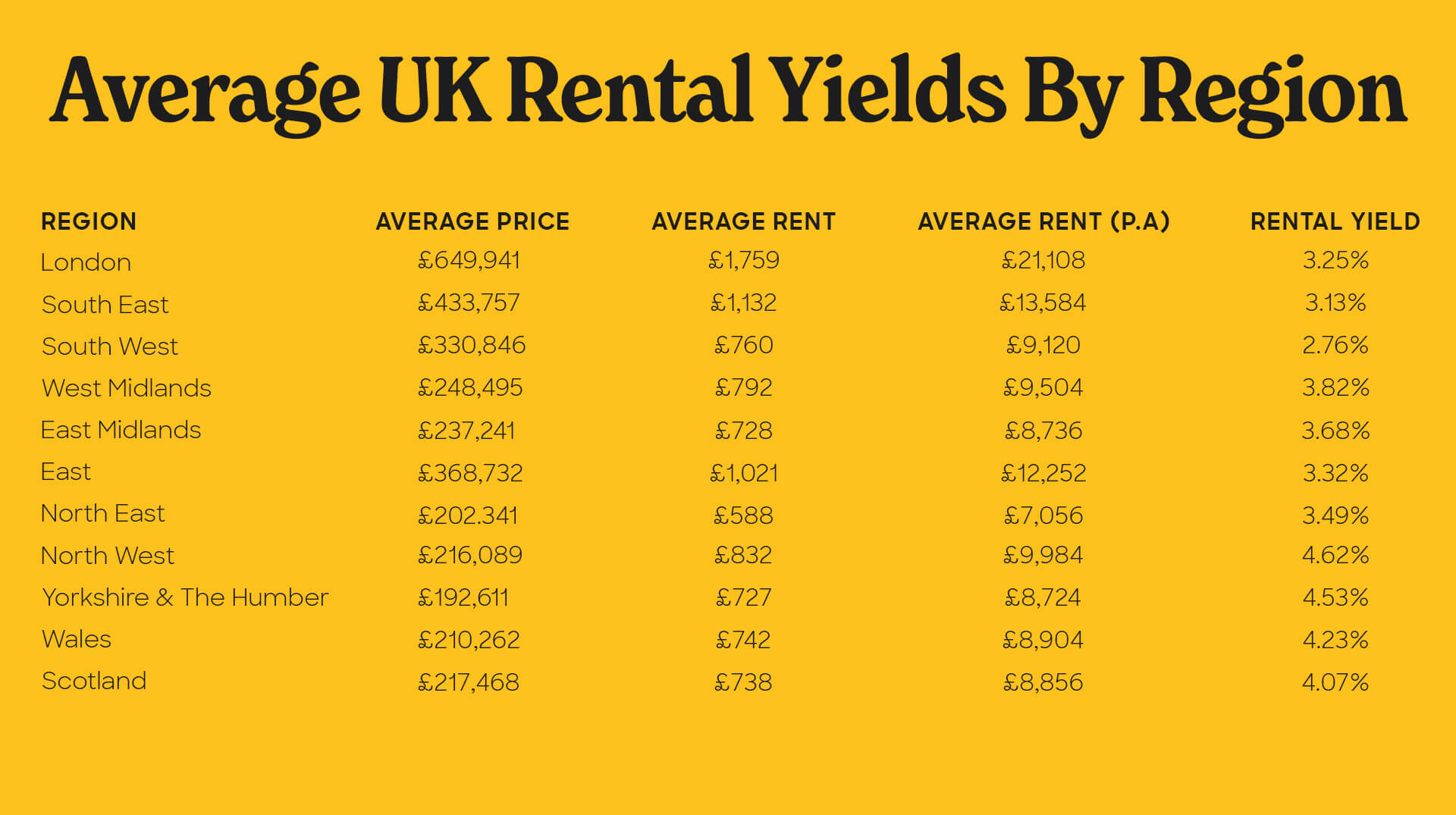What is a Good Rental Yield?

Rental yields are at the heart of any property investment. They provide investors with a tangible idea of how their investment is performing that can be easily compared across different locations and developments. Since most investors choose buy-to-let for the long-term rental returns it can provide, understanding what is a good rental yield is vital. In this blog, we discuss how you can work out rental yield, what the average yield is for the UK and answer the question: what is a good rental yield?
What is a rental yield?
A rental yield is the rental income that a property investor could achieve on their investment asset. It’s a percentage figure that is calculated by dividing the annual rental income of a property by the total value of the investment asset. There are two types of rental yield that a property investor needs to know about. It’s vital to understand how they differ when you’re researching potential rental profits:
Gross Rental Yield: This is the amount that you stand to make before any expenses are deducted. It’s calculated by using the price of your buy-to-let property and the property income you earn each month over a year.
Net Rental Yield: Unlike a gross rental yield, a net rental yield takes into account the price of the property, the monthly rental income and any associated costs with the property.
Rental income is most heavily affected by housing prices, capital growth and the monthly rent that a property can generate. Investors interested in building long-term rental income should consider prioritising properties that deliver above-average rental yields.
What is a good rental yield?
Although rental yields are impacted by several different factors, many property professionals consider between 5% and 7% to be a good rental yield. This represents a strong, realistic return on investment that can typically cover the running costs of a property while delivering significant profit.
For example, the average gross rental yield in the UK is 4.71% but certain postcodes in Birmingham are achieving above 5%. This is because Birmingham city-centre is still relatively affordable compared to many other UK cities. However, it has the amenities – transport links, employment opportunities and public spaces – to command much higher rents, further increasing the return on your investment.
On the other hand, central London postcodes are currently delivering yields of 3.25%, much lower than the UK average. This is because, despite having much higher rents, purchase prices in the city are much higher at around £649,491.
It’s these factors that need to be considered when you’re exploring different buy-to-let investment locations. Areas that are undergoing regeneration or redevelopment typically have considerable rental growth on the horizon. New tenants are attracted by the better quality of living, which translates to higher rents for investors. In many cases, these areas also generally have lower property prices, which can make it more accessible for investment.

This has made locations such as Derby in the East Midlands very exciting for property investment. The East Midlands saw the highest annual rental growth over the last 12 months, where prices increased by 8%. At the same time, a £3.5 billion regeneration plan that includes a full restoration of Nightingale Quarter is transforming the city into a national destination.
If you’re performing rental yield research, a good place to start is understanding the average rental yield in the UK. This metric can help you find good investments with the highest rental returns in a crowded market. It’s important to remember that there generally isn’t a one size fits all approach when you’re researching rental yields. Each yield is heavily impacted by postcode and property type.
Related: Best Rental Yields in the UK in 2022
How to work out rental yield?
Working out the gross rental yield of a property and what you can expect to receive involves a relatively easy equation.
- Find out your annual rental income (monthly rent x 12)
- Divide your annual rental income by the price you paid for the property
- Multiply the answer by 100
In practice, this looks like this:
- Annual Rental Income = £12,000 (£1,000 x 12)
- Property Price = £200,000
- £10,000 / £200,000 = 0.6%
- 0.6% x 100 = 6%
- Rental Yield = 6%
If you want to work out net rental yield, the equation is the same as the example above. The only difference is you deduct any expenses from your annual rental income to work out your net rental income.
What costs does your rental income need to cover?
If you’re looking to build consistent profit from a property investment, the rental income you receive needs to cover three key things:
- The running cost of the property
- Mortgage payments
- Unforeseen challenges
Mortgage payments are the most significant and the most obvious. Most lenders require the rental income to cover 125% of the monthly payments (particularly on an interest only loan). Generally, it’s in your best interest to ensure that this is the case.
The running costs of the property include much more than just maintenance costs. You may also need to consider management fees and buy-to-let insurance amongst other things. Having a good understanding of these from the outset can help you more accurately plan financially.
Finally, unforeseen challenges such as replacing a roof, fixing a boiler or leaky plumbing can put a serious dent in your bottom line, especially across a portfolio. This is why many investors opt for the best possible rental yield. A good rental yield can build a ‘rainy-day’ fund to mitigate emergencies that would otherwise sink a property investment.
What makes a good buy-to-let investment?
While exceptional rental returns are important, there’s other factors that need to be considered in the wider context of the investment. Opting for the best possible rental income might seem sensible but typically, these properties don’t always experience the best capital growth, meaning property prices stay low.
A good buy-to-let investment strikes a balance between strong rental returns, good capital growth and excellent demand, meaning it’s always let.
This is largely determined by the location in which you’re investing. Location dictates the demand, which feeds into the rental growth and capital growth.
If you’re looking for a complete rundown of the best places to invest in the UK in 2022, you can download our 2022 UK Investment Guide. It features all of the top investment locations, broken down by capital growth, rental yields and demand.
In short: What is a good rental yield?
- A good rental yield is between 5% and 7%
- To work out your rental yield: divide annual rent by the property value and multiply by 100
- The average UK rental yield is 4.71% – anything above that can be considered good
- The best buy-to-let investments take into account yield, price growth and demand
